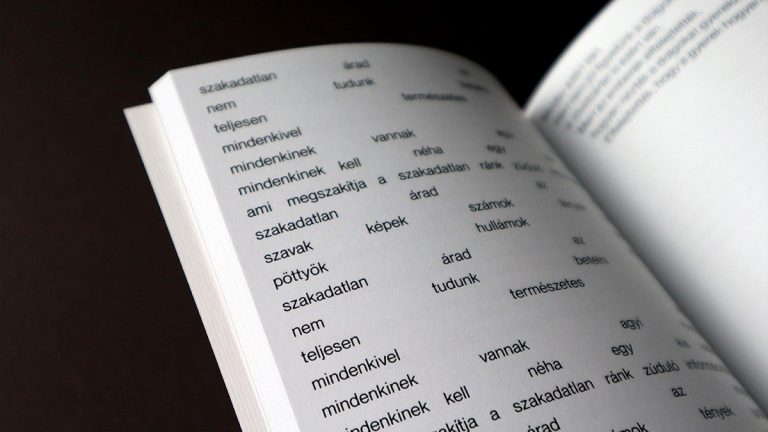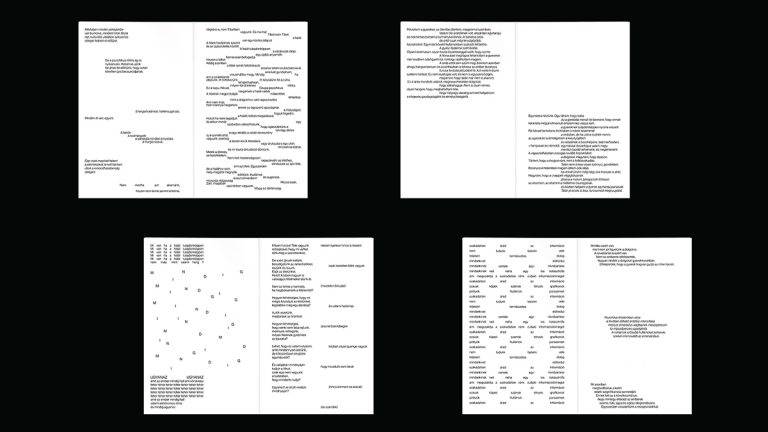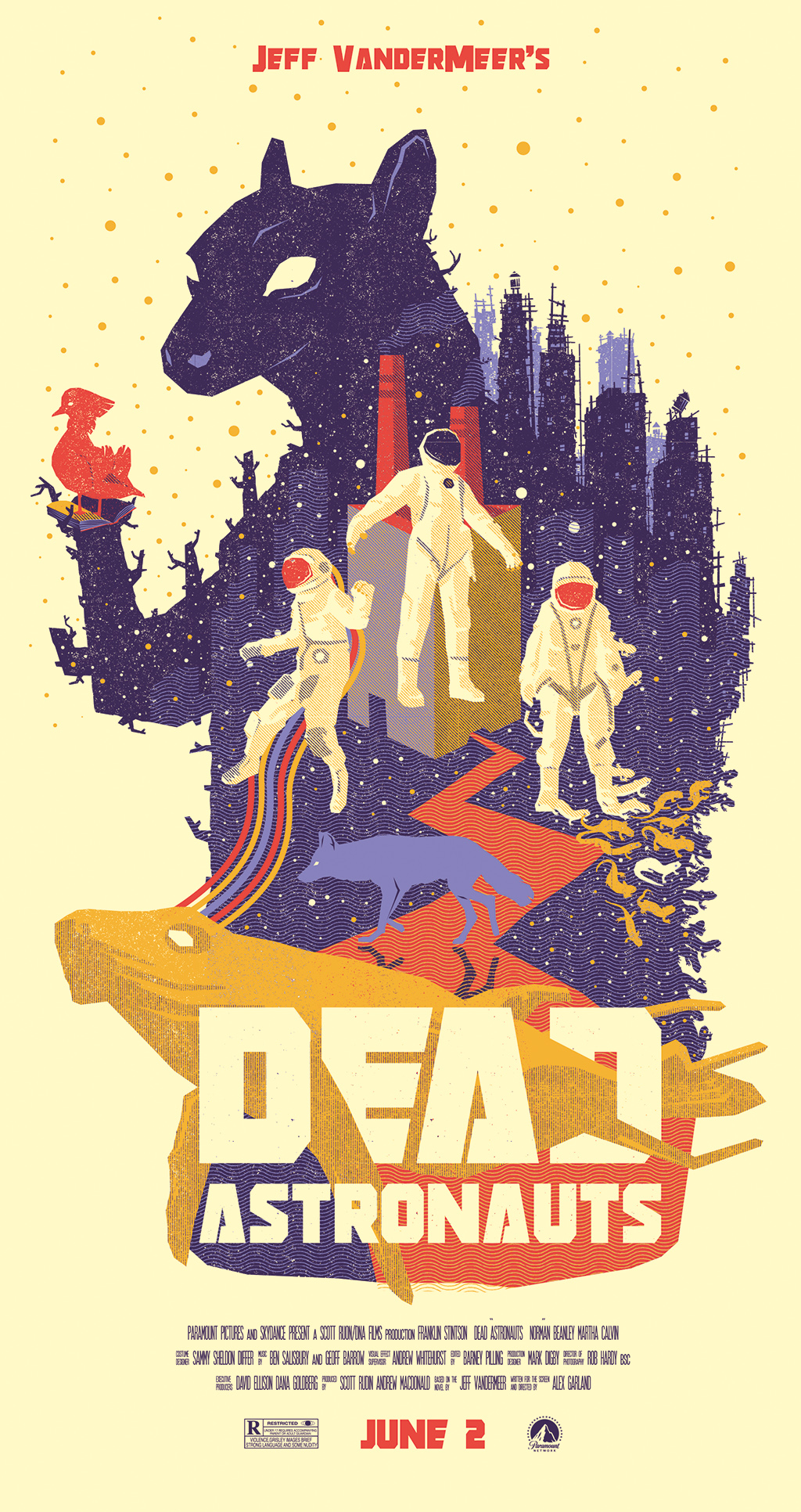

Newsfeed replacement – A transmedia book by Petra Pilbak
“Dozens of studies by psychologists, neurobiologists, educators, and Web designers point to the same conclusion: when we go online, we enter an environment that promotes cursory reading, hurried and distracted thinking, and superficial learning”, writes Nicholas Carr in his book The Shallows: What the Internet Is Doing to Our Brains. The list of job titles could well include graphic designers as well, all the more so because Petra Pilbak reached the same conclusion in connection with her masterwork. Beyond coming to the same realisation, being a graphic designer, she also proposed suggestions on how to make books more appealing in light of contemporary user attitudes.
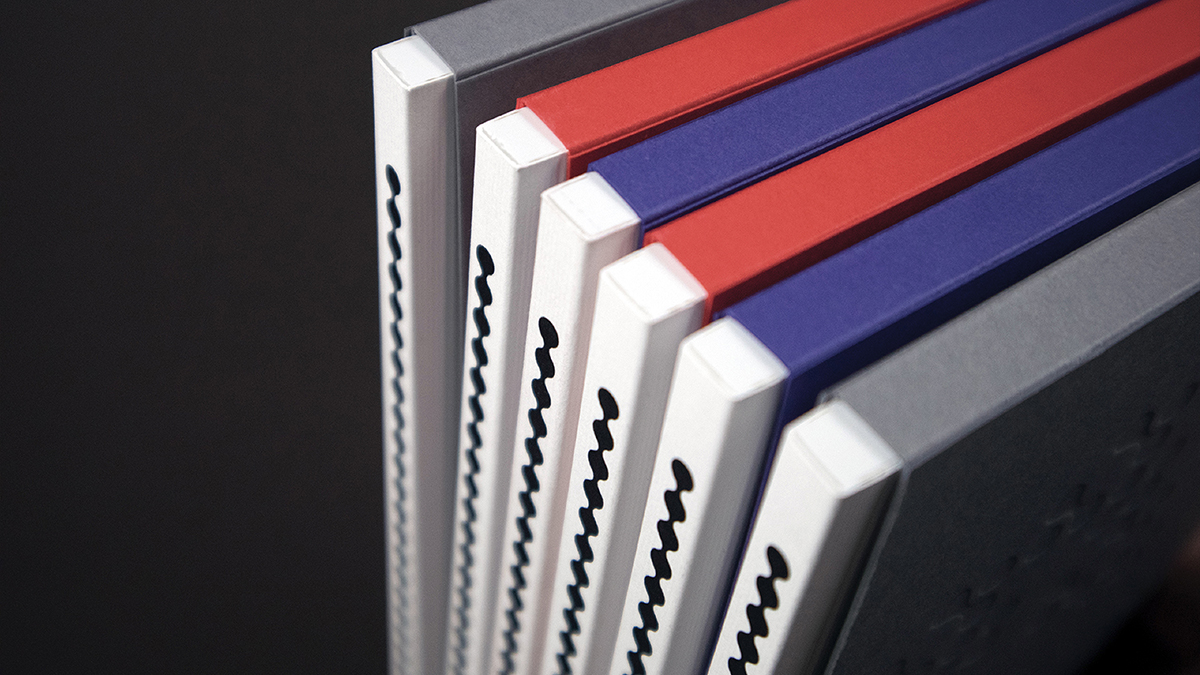
“I often experience that after starting a book, I give up because, for one reason or another, I just can’t get into it, pay attention to what I’m reading, have time to continue reading or get sufficiently immersed in the book to let myself be drawn into it. We are becoming more and more out of touch with activities that require time, slowing down, and a sort of dedication”, her razor sharp diagnosis says. To be fair, as Marshall McLuhan puts it, reading, or “the separation of all kinds of experiences into uniform and continuous units” [1] is far from being an essential aspect of our existence.
In his The Gutenberg Galaxy, McLuhan said: “Until writing was invented, we lived in acoustic space, where the Eskimo now lives: boundless, directionless, horizonless, the dark of the mind, the world of emotion, primordial intuition, terror.” This assumption foreshadows the issue every culture pessimist is attempting to bypass when the decline of literature comes up, namely that while writing and speech enhance human potential and consciousness, they also limit emotions and capacity for sensations. In an age where our senses are constantly stimulated using hypnotic digital tools and neuroscientific marketing techniques, it is not the least surprising that deep reading is becoming more and more of a struggle.
Although Petra took a different approach than suggested by McLuhan’s assertions, physical sensations did become the main focus of her masterwork, and for a good reason. She observed that objects that engage more than one sense, and simultaneously with reading convey extra stimuli can help maintain concentration, which led her to redesign Don DeLillo’s novel White Noise. The concept book goes far beyond “experimental” typographical and bookbinding practices and combines various interactive solutions, digital interfaces, and other audiovisual components. It is one part book and one part maze.

Scattered among the quotes, there are encrypted riddles on the pages that the reader needs to work out themselves. The solved riddles help gradually uncover the text of the novel, forming a bridge between analogue and digital interfaces.
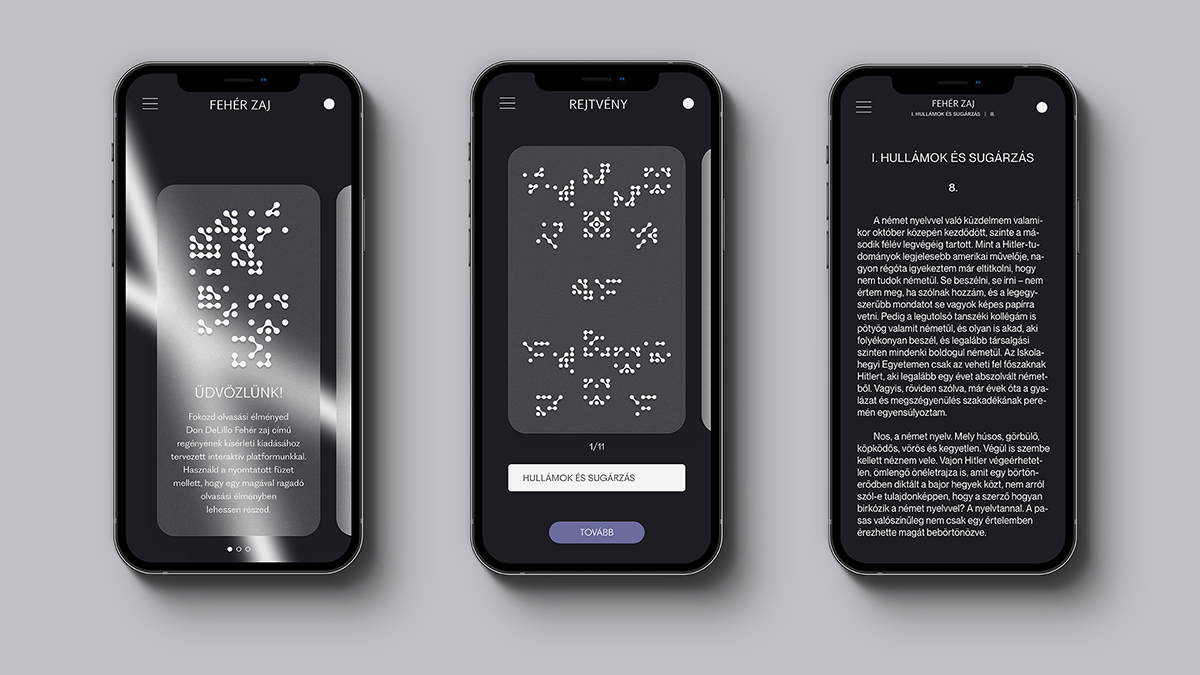
The text can be deciphered using a digital application, where after solving the riddles in the book, the text of the novel becomes visible.
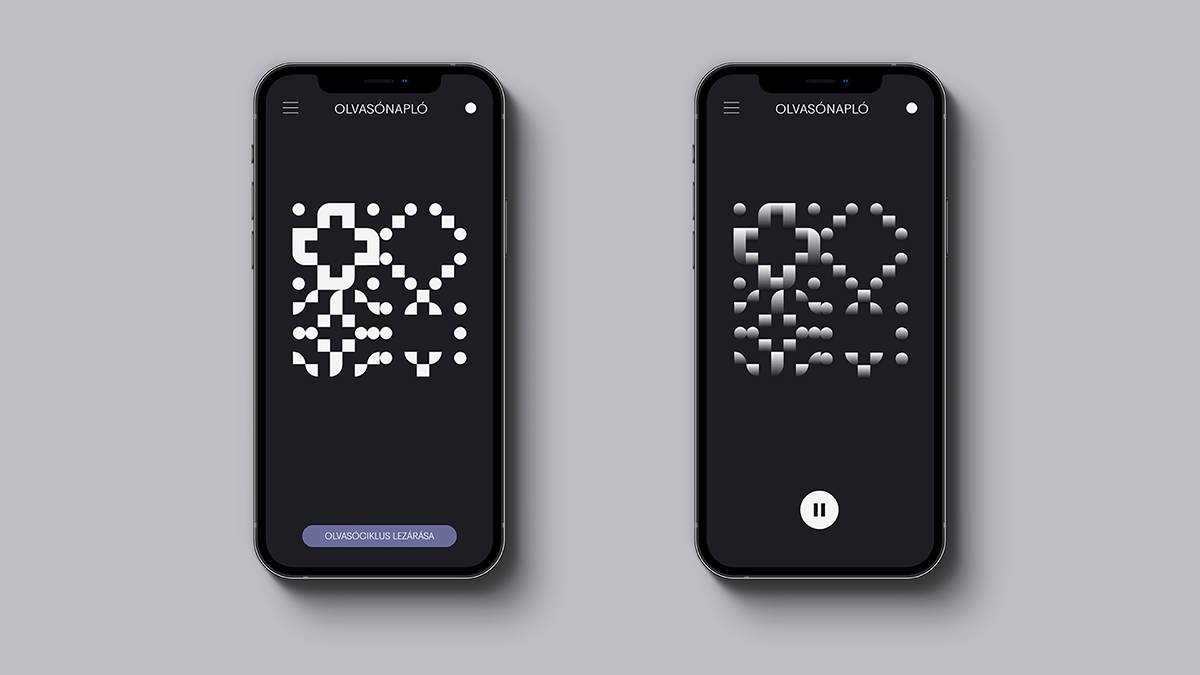
The reader also has the option to write a visual book report within the application. Taking the conventional book report concept further, the reader can put down parts of the text that are important or stand out for them and the relationship between them using pictures and icons instead of language and writing. This process encourages careful reading, interpretation, and fastidious following of the story.

The various combinations of icons reflect the feel of the novel, the storylines the reader wants to highlight, and the connections based on subjective interpretation. Each icon has its own sound. Combined, they give a generative audio material to the reader’s visual markings, producing a complementary audio material based on an individually developed generative method.
The experimental nature of Petra’s transmedia storytelling lies in blending conventional and digital reading modes and adding interactive elements. Although the project is in concept phase, the declared intention of the artist is, in the event of eventual publication, reaching out to readers who have lost touch with reading rather than promoting reading in general or a particular novel. And let’s face it: many of us feel the same.
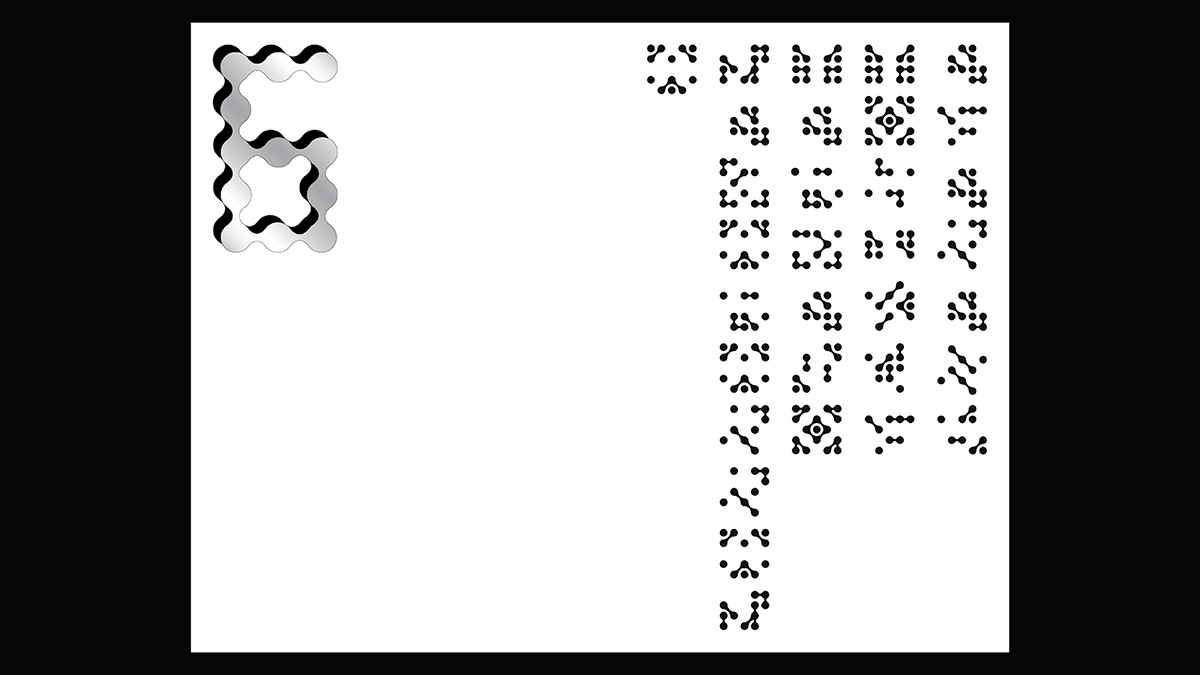
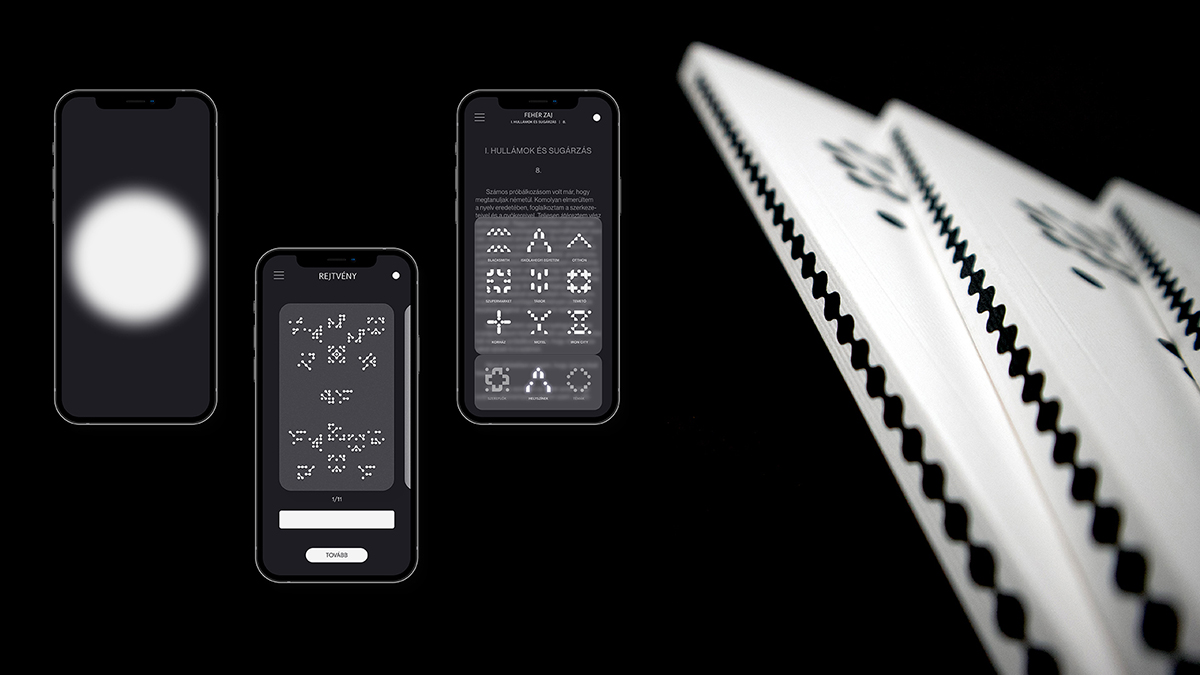

// /
[1] Marshall McLuhan: The Gutenberg Galaxy, 1962
[2] Transmedia storytelling is a special technique of telling a narrative across multiple media platforms and formats. The term was coined by Henry Jenkins in 2003.
// /
The project was completed at the Graphic Design MA programme of Moholy-Nagy University of Art and Design with Dóra Balla as supervisor.

